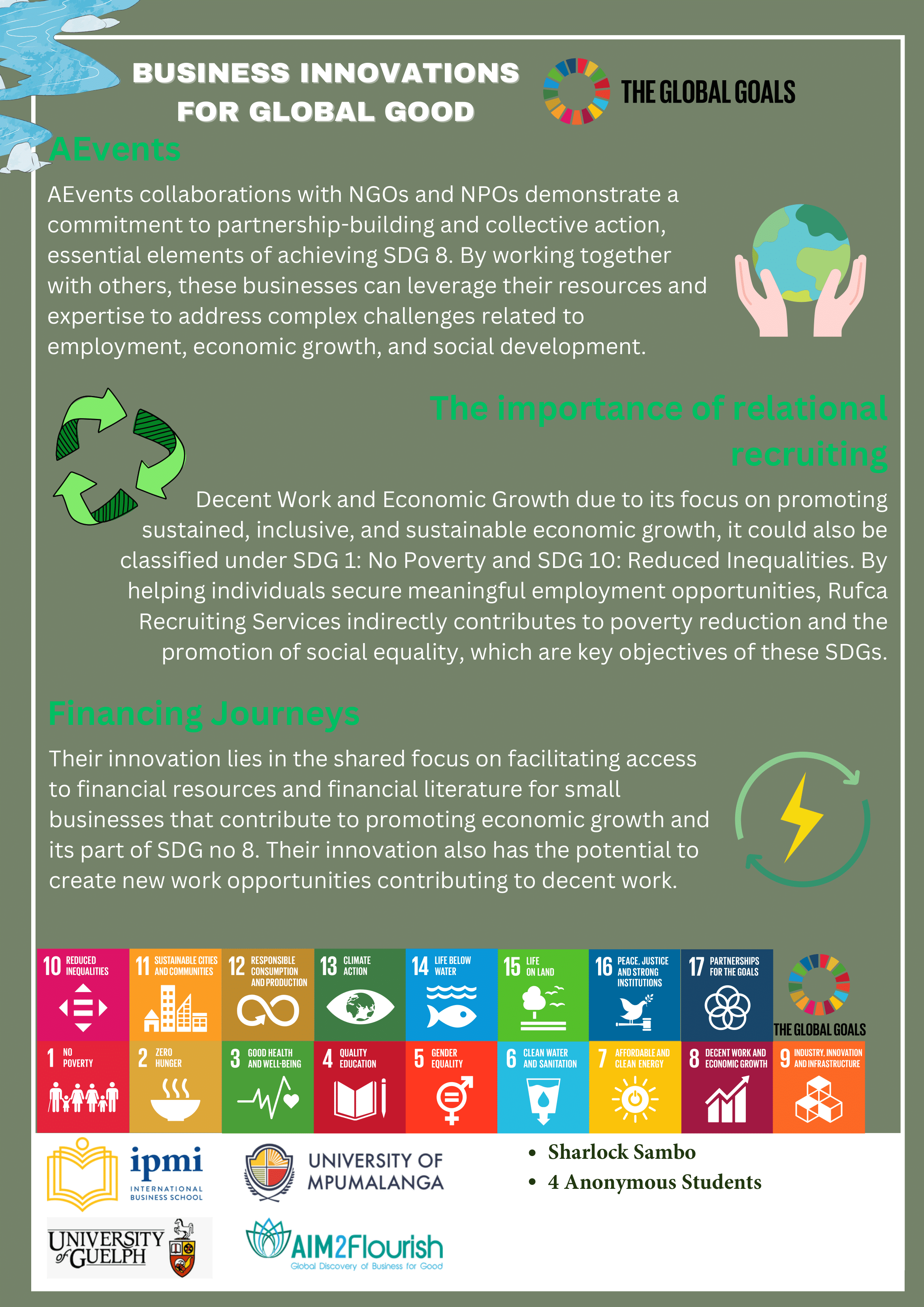20 SDG 8 – Decent Work and Economic Growth – Team 23
Sharlock Justin Sambo and Anonymous

Team Reflection
As a team, we embarked on a journey to explore business innovations for sustainability through the lens of the AIM2Flourish stories and our chosen Sustainable Development Goal (SDG). Our analysis focused on two inspiring stories: HapiHabi Wearable Weaves and Muta. These stories shed light on the transformative power of businesses in addressing social and environmental challenges while advancing SDG 8: Decent Work and Economic Growth.
In delving into the stories of HapiHabi and Muta, we were struck by the ingenuity and passion of the innovators, Atty. Evie and Alejandro Caiaffa, respectively. HapiHabi redefines the fashion industry in the Philippines by uplifting local weavers and preserving Filipino culture through wearable weaves. Meanwhile, Muta revolutionizes waste management in Colombia by formalizing the recycling industry, providing stable employment to recyclers, and promoting responsible waste disposal. As we analyzed these stories, we couldn’t help but feel inspired by the innovators’ commitment to social and environmental causes. Their stories challenged our preconceived notions about the role of business in society and underscored the potential for businesses to drive positive change beyond profit-making. Our exploration of these stories deepened our understanding of sustainability issues and their interconnectedness with business practices. Drawing on our academic knowledge, we recognized the relevance of concepts such as the triple bottom line, corporate social responsibility, and sustainable development. These stories reinforced the importance of integrating social and environmental considerations into business operations to achieve long-term success and impact.
Moreover, the stories challenged us to critically reflect on the assumptions we held about businesses’ responsibilities. We realized that businesses have the potential to be powerful agents of change, not just in terms of economic growth but also in addressing social inequalities and environmental degradation. The formalization of the recycling industry by Muta, for example, highlighted the transformative impact of business innovations on marginalized communities and the environment. Reflecting on our exploration of the AIM2Flourish stories, we recognized the profound implications for our future actions and thinking. As aspiring business professionals, we were inspired to integrate sustainability principles into our future endeavors, whether as entrepreneurs, managers, or policymakers. We envisioned ourselves advocating for responsible business practices, driving innovation for social and environmental good, and promoting inclusive economic growth. Furthermore, this experience underscored the importance of collaboration and teamwork in addressing complex sustainability challenges. By sharing tasks, leveraging diverse perspectives, and drawing on our collective knowledge, we were able to gain deeper insights into the role of business in advancing sustainability goals. Moving forward, we are committed to fostering collaboration and interdisciplinary approaches to tackle sustainability issues effectively.
In conclusion, our exploration of business innovations for sustainability through the AIM2Flourish stories has been both enlightening and transformative. We learned valuable lessons about the potential of businesses to drive positive change and contribute to the achievement of the SDGs. By analyzing these stories, we deepened our understanding of sustainability issues, challenged our assumptions, and envisioned new possibilities for future action. As we continue our journey, we are inspired to harness the power of business for social good and work towards a more sustainable and equitable future.
Individual Reflection
Sharlock
I enjoyed this whole experience with coil, after all, it was my first time collaborating with international students for a group project. The different time zones really made for a very different meeting experience, because for us South Africans during meeting times it was in the afternoon, for the Canadians it was the morning and for the Indonesians it was the evening, it kind of baffled me that we could all be in the same meeting at once but each of us could either be looking forward to breakfast, lunch or even dinner. The differences in how the innovations from the AIM2Flourish stories could be implemented in each country actually opened my eyes to how different our countries are when it comes to issues of economic growth and development. Aside from the differences in time zones there really weren’t any challenges that we faced as a group, using English as the main communication language made things a lot easier and for information to pass by and I enjoyed everyone’s company and we had a lot of laughs during our meetings.
References
Lipmanowicz, H., & McCandless, K. (2013). Liberating Structures: Including and Unleashing Everyone. Liberating Structures Press.
Rolfe, G., Freshwater, D., Jasper, M. (2001). Critical reflection in nursing and the helping professions: A user’s guide. Wiley-Blackwell.
United Nations. (2015). Transforming our world: the 2030 Agenda for Sustainable Development. United Nations.

